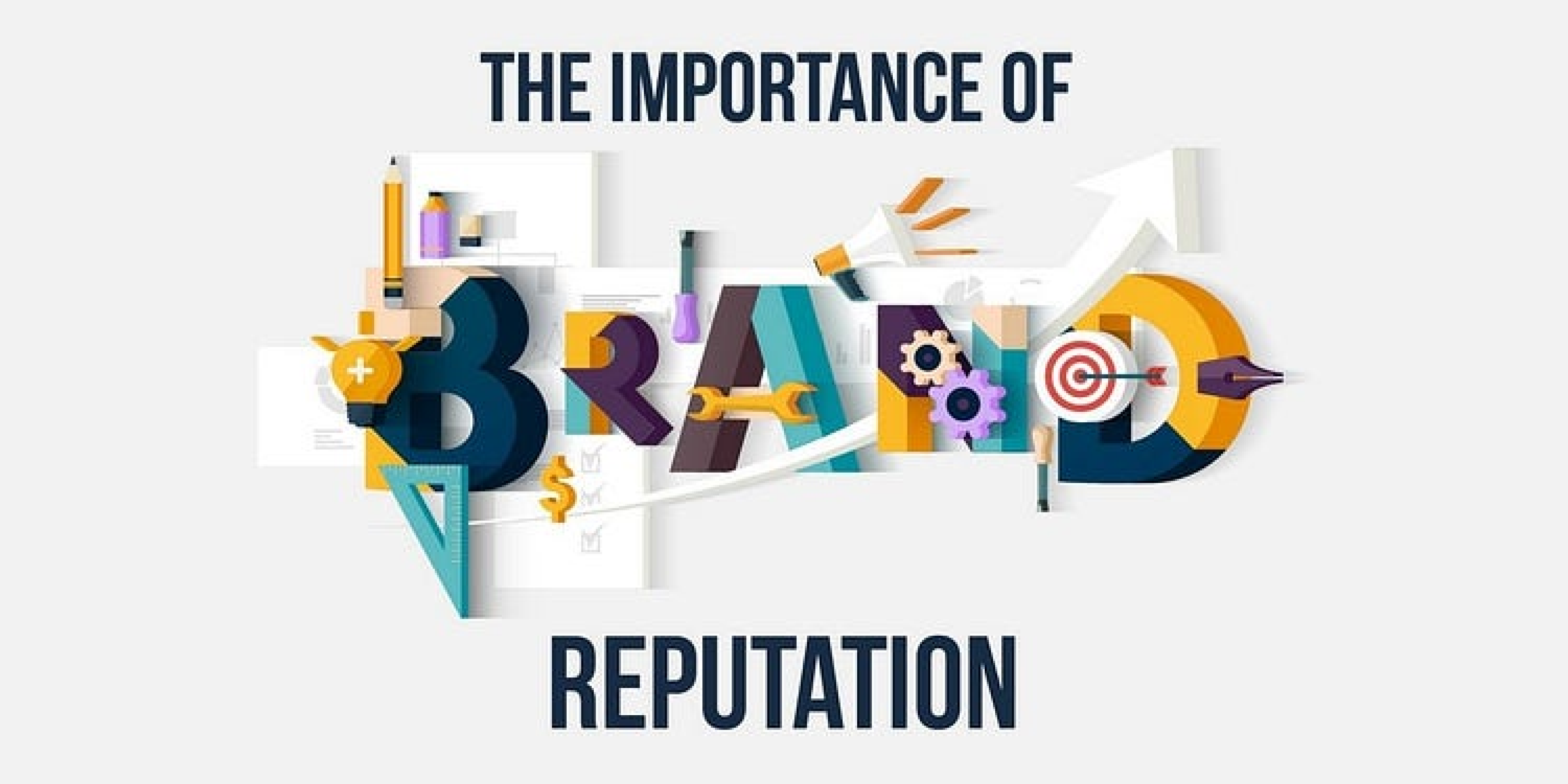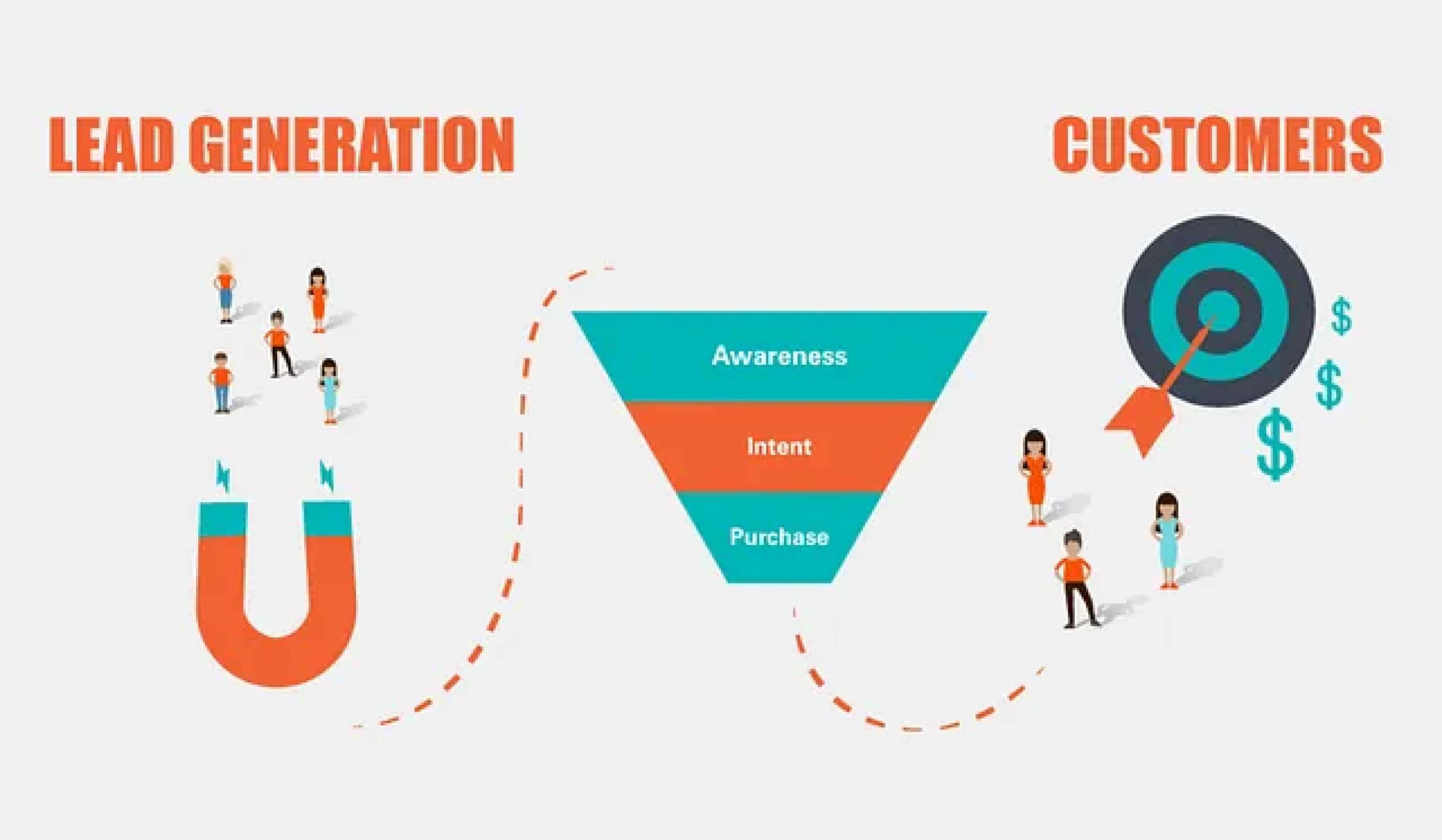Content Creation Strategy Made Simple: A How-To Guide
Riddhima K.
Content Writer at Socialwyz | 11 min read
Share on:
Dec 24, 2022
Are you tired of feeling overwhelmed and uninspired when it comes to crafting your next masterpiece? No need to search farther; our “Content Creation Strategy Made Simple” guide is here to assist. We’ll break down the process into easy-to-follow steps, with real-world examples from a variety of industries to inspire your next big idea. So grab a pen and let’s get creative!
A survey by Demand Metric found that content marketing generates three times as many leads as traditional marketing, while costing 62% less.
How to overcome common challenges in content creation ?
How to Define Your Goals and Audience for Your Content Marketing Strategy ?
How to create buyer persona ?
How to conduct a content audit and gap analysis ?
How to create a content calendar in 9 simple steps ?
How to Write Engaging and SEO-Friendly Content: 10 Tips?
How to calculate Return of Investment (ROI) from content marketing campaigns ?
Discover successful content marketing case studies across 20 diverse domains including AI, Blockchain, Cybersecurity, E-commerce, Gaming, Robotics, Healthtech and Spacetech. These case studies showcase effective strategies and tactics employed in their campaigns, delivering quantifiable results in their respective industries.

We will also be sharing actionable tips and case studies across various industries. From Artificial Intelligence (AI) and Blockchain to Cybersecurity and FinTech, businesses have been incorporating these innovations into their operations. Healthcare, E-commerce, and Social media have been majorly impacted by technology, resulting in improvements in patient care, online shopping experiences, and digital communication. EdTech has transformed the way people learn and consume educational content. CleanTech and FoodTech are on the rise as more people prioritize sustainable practices and healthy eating habits. On-Demand Services, IoT, Gaming, Mobile Apps, VR and AR, Robotics, Cloud Computing, 3D Printing, and Space Technology are also making significant contributions to their respective fields, propelling industries forward with their advancements.
So, take a deep breath, grab a cup of coffee, and let’s dive into the world of content creation.
“Your content should be the answer to your customers’ questions, not just a sales pitch.” — Socialwyz
In the world of content creation, businesses understand the value of establishing a robust online presence. Crafting a well-designed content strategy holds great significance in the realm of digital marketing. It encompasses a detailed plan that guides enterprises on how to produce, disseminate, and administer their content effectively. By formulating a content strategy, businesses can set targets and delineate the necessary steps to achieve them. This article will delve into the significance of having a content strategy in place and why it warrants a crucial element in a business’s online marketing endeavors.
I. What is content creation strategy ?
Creating relevant, informative, and engaging content is essential for any company’s success, and a solid content creation plan is the key to achieving this. An effective content creation strategy should have a deep understanding of the target audience and their preferences, and clearly define the types of content to be produced, the channels to be leveraged, the cadence of content sharing, and the metrics for evaluating success.
Content Strategy
A well-designed content strategy goes beyond just posting social media updates; it is a deliberate approach to building a strong online presence that aligns with company goals and establishes the business as an industry authority.
A study by HubSpot found that companies that publish 16 or more blog posts per month receive 3.5 times more traffic than those who publish 0–4 blog posts.
a. Why is content creation strategy important ?
Are you a small business owner struggling to attract and retain customers in today’s digital age? With the fierce competition in the market, it’s becoming increasingly important to have a solid content strategy that sets you apart from the crowd. Not convinced yet? Let’s explore the top benefits of having a content strategy that can take your business to new heights.
1. Increased website traffic:

Without a doubt, high-quality content is the key to attracting more visitors to your website.
A well-planned content strategy will help you consistently create valuable and engaging content that your target audience is looking for. This content will not only grab their attention but also encourage them to spend more time on your website, which increases the chances of conversion.
2. Improves brand value and reputation:

In today’s digital world, customers are more concerned than ever about the brands they associate themselves with. They want to support authentic, trustworthy businesses. Having a content strategy that reflects your brand values and messaging can help to build a loyal audience that trusts your business. Creating consistent, high-quality content can also position you as an authority in your industry and boost your reputation.
3. Increases customer engagement:

A content strategy doesn’t just help you attract new customers; it also helps you retain existing ones. By regularly creating engaging content, you’ll keep your customers informed, build a relationship with them, and encourage them to engage with your brand. This engagement can take various forms, such as likes, comments, shares, and even purchases.
4. Generates leads and sales:

At the end of the day, every business aims to generate leads and sales, and a content strategy can help achieve this goal. By creating valuable and relevant content, you attract potential customers, educate them about your products or services, and ultimately convince them to make a purchase. In short, a content strategy can help you create a sales funnel that converts.
In conclusion, having a well-planned content strategy is necessary for your small business’s success in today’s competitive digital space. It generates leads and sales, improves your brand value, increases customer engagement, and increases website traffic, ultimately taking your business to the next level!
A survey by the Demand Gen Report found that 47% of buyers viewed three to five pieces of content before engaging with a sales representative.
b. What are the challenges in content creation ?
Starting a content strategy for a small business can be a daunting task, with many challenges to face along the way. Below are some common challenges small business owners might face while starting with their content strategy, and tips on how to overcome them.
Limited time and resources : Many business owners struggle with limited time, resources, and budgets to create high-quality content consistently. However, it’s important to remember that consistent content creation is key to building a brand’s online presence and increasing customer engagement. To overcome this challenge, business owners can leverage content creation tools themselves or outsource content creation to freelancers can prove to be a cost-effective solution to overcome this challenge.
Targeting the right audience : Business owners might struggle with identifying and targeting the right audience for their content. With so many potential customers and different channels to reach them, it can be overwhelming to know where to start. To overcome this challenge, small business owners can begin by creating detailed buyer personas that outline their target market’s demographics, interests, and pain points. Using these personas as a guide can help ensure that content is targeted specifically to those people who are most likely to engage with it.
Developing a consistent brand voice : Developing a consistent brand voice across all content channels can be challenging for small business owners who may not have access to marketing expertise. Without a consistent brand voice, customers may receive mixed messages, which can be detrimental to business growth.To overcome this challenge, small business owners should create a brand voice guide that outlines the tone, style, and language used in all content channels. This will ensure a uniform voice and message is communicated to customers, regardless of the channel they interact with.
Measuring content effectiveness : Measuring content effectiveness is critical to understanding a content strategy’s success and growth. Small business owners may struggle with identifying and tracking relevant metrics to determine whether their content is resonating with customers.To overcome this challenge, small business owners can use analytics tools such as Google Analytics, Buzzsumo, or SEMrush to track content performance across channels. They can also use surveys, feedback forms, and social listening tools to gain insights into what their customers are saying about their content.
In conclusion, starting a content development strategy for a small business can present numerous challenges, but with a clear understanding of what to expect, careful planning, and the right tools and resources, these challenges can be overcome. By staying focused and committed to developing a quality content plan, small business owners can build a strong online presence and attract new customer prospects while retaining the existing ones.
Data from Buzzsumo shows that long-form content (over 3,000 words) tends to get more social shares and backlinks than shorter content.
II. How to Define Your Goals and Audience for Your Content Marketing Strategy
Content marketing is a powerful way to attract and engage your target audience, build trust and credibility, and generate leads and sales. But before you start creating and distributing content, you need to have a clear idea of what you want to achieve and who you want to reach. In this blog post, we will explain how to define your goals and audience for your content marketing strategy, and provide some examples of SMART goals and buyer personas.

a. What are content marketing goals?
Content marketing goals are the specific, measurable, achievable, relevant, and time-bound (SMART) objectives that you want to accomplish with your content. They should align with your overall business goals and marketing strategy, and help you track your progress and evaluate your results. Some common content marketing goals are:

Increase brand awareness: This means making more people aware of your brand, products, or services, and what makes you unique or valuable.
Generate traffic: This means driving more visitors to your website or blog, where they can learn more about your brand and offerings.
Build an email list: This means collecting the contact information of your prospects, so you can nurture them with more content and offers via email.
Generate leads: This means getting your prospects to express interest in your products or services, by filling out a form, downloading a lead magnet, signing up for a webinar, etc.
Convert leads into customers: This means persuading your leads to make a purchase decision, by providing them with compelling content and offers that address their pain points and needs.
Retain customers: This means keeping your existing customers satisfied and loyal, by providing them with valuable content and offers that enhance their experience and solve their problems.
Increase customer advocacy: This means turning your customers into promoters of your brand, by encouraging them to share their positive feedback, reviews, referrals, testimonials, etc.
“Content is the bridge between you and your customers — create a sturdy one and they’ll keep coming back.” — Socialwyz
b. How to set SMART content marketing goals?

To set SMART content marketing goals, you need to follow these steps:
Specific: Clearly and concisely state what you hope to accomplish with your material. “I want to get more people to my website,” for instance.
Measurable: Choose the metrics you’ll use to gauge your content’s success and progress. To track the amount of unique visits to my website, for instance, I’ll use Google Analytics.
Achievable: Confirm that your objective is doable given the time and resources available. For instance, “In the following six months, I will see a 20% growth in visitors to my website.”
Relevant: Be sure your aim is pertinent to your business’s broader objectives and is consistent with your marketing plan. For instance, “Increasing website traffic will assist me in generating more leads and sales for my company.”
Time-bound: Set a deadline for achieving your goal and break it down into smaller milestones. For example, “I will increase traffic to my website by 20% in the next six months, which means I need to increase it by 3.3% each month”.
“Good content is not storytelling. It’s telling your story well.” — Gary Vaynerchuk
c. Here are some examples of SMART content marketing goals:
Increase brand awareness by reaching 10,000 new followers on Instagram in the next three months.
Generate traffic by ranking on the first page of Google for 10 relevant keywords in the next six months.
Build an email list by getting 1,000 new subscribers from a lead magnet in the next two months.
Generate leads by getting 500 webinar registrations from a blog post in the next four weeks.
Convert leads into customers by getting 100 sales from an email campaign in the next two weeks.Retain customers by getting 50% of them to renew their subscription in the next year.
Increase customer advocacy by getting 100 positive reviews on Trustpilot in the next month.
“Content is the fuel that powers your digital marketing engine.” — Ryan Deiss
d. What is a buyer persona?
A buyer persona is a semi-fictional representation of your ideal customer based on market research and data from your existing customers. It helps you understand who your target audience is, what they want, need, think, feel, do, and how they behave. A buyer persona typically includes:

Demographic information: such as age, gender, location, income level, education level, etc.
Psychographic information: such as interests, hobbies, values, beliefs, motivations, challenges, pain points, goals, etc.
Behavioral information: such as online habits, preferred channels of communication, buying process stages,
e. How to create buyer persona ?
A buyer persona is a fictional representation of your ideal customer based on market research and data from your existing customers. Creating a buyer persona can help you tailor your marketing strategies and products to the specific needs, behaviors and goals of your target audience. Here are some steps to create a buyer persona:
Identify your current customers and prospects : Surveys, interviews, social media analytics, and website analytics are some of the ways you might use to get demographic and psychological data on them.
Segment your customers and prospects into groups based on traits they have in common, such as age, gender, location, income, education, occupation, interests, hobbies, difficulties, pain points, goals, and values.
Choose one or more segments to focus on, and give each one a name and a face. To develop a visual depiction of your buyer persona, use internet tools or templates. Add pertinent information about their history, job, requirements, preferences, and expectations.
Validate your buyer persona by comparing it to actual facts and customer and prospect feedback. You can use tools like A/B testing, customer reviews and testimonials to measure how well your buyer persona matches your actual audience.
Update your buyer persona regularly as your market and customers change over time. You can use tools like customer feedback surveys, social media monitoring and industry reports to keep track of new trends and insights that may affect your buyer persona.
A survey conducted by SEMrush found that blog posts are the most popular and effective content format among marketers, with 81% of them using blog posts as a part of their content strategy.
III. How to conduct a content audit and gap analysis ?
Any content marketer who wants to increase the effectiveness of their website and reach their target audience must first undertake a content audit and gap analysis. We will define a content audit and gap analysis, show you how to evaluate your current content and locate areas for improvement using tools like Google Analytics and SEMrush, and then show you how to put your findings into practise to develop a more effective content strategy.

a. What is a content audit ?
A content audit is the process of reviewing your website’s content, including blog posts, landing pages, eBooks, videos, etc. A content audit’s objectives include evaluating your content’s efficacy, consistency, relevancy, and quality as well as pointing out any gaps or problems that should be fixed.
b. What is content gap analysis ?
A content gap analysis is the process of comparing your content with your competitors’ content and your audience’s needs and expectations. The objective here is to identify the topics, keywords, formats, and types of content that are either missing from or underperforming on your website. It also identifies opportunities for creating new or improved content that can fill those gaps and draw in more visitors, leads, and customers.
c. How can you assess the quality of your current content using Google Analytics and SEMrush?
Two potent tools that can support you in doing an exhaustive content audit and gap analysis are Google Analytics and SEMrush. Here are a few applications for them:
Google Analytics: Google Analytics is a free tool that monitors and generates reports on a variety of variables pertaining to the traffic, usage, conversions, and effectiveness of your website. With Google Analytics, you can
Examine the usage statistics for your content, such as pageviews, bounce rate, time on page, and conversions.
Determine which web pages on your site are the most visited, interesting, and lucrative.
Segment your traffic to better understand how various audiences engage with your content by looking at its source, device, location, etc.
Establish objectives and events to gauge particular behaviours or effects connected to your material.
The Site Content report can be used to get a summary of all your pages and their stats.
To find out which keywords your website’s users are using to search, use the Site Search report.
To find out where users are leaving your website, use the Behavior Flow report to track their path.
SEMrush: SEMrush is a premium tool with a number of tools for SEO, PPC, social media, content marketing, and market research. Using SEMrush, you can:
Examine your content’s search engine positioning for various keywords.
Find out which keywords are bringing in the most organic visitors to your website.Find fresh keyword chances to use as the focus of your article.
Examine the keyword rankings of your rivals in comparison to your own.
Crawl your website and assess the effectiveness and quality of your pages using the Content Audit tool.
Utilize the Content Gap tool to identify the keywords for which your rivals are ranking but you are not.
Utilize the topic research tool to come up with content ideas for your area based on hot themes and inquiries.
d. How to implement your findings to create a better content strategy?
Using your results can help you develop a better content strategy once you’ve reviewed your current content and found any gaps or possibilities using Google Analytics and SEMrush. You can follow these steps:
Prioritise the most significant gaps and opportunities, based on your objectives, available resources, and audience demands,
Create a content schedule that specifies the kind of content you’ll produce, when it will be released, how it will be distributed, and how its success will be measured.
Improve, update, or remove any pages that are duplicate, low-quality, out-of-date, or irrelevant from your present material to optimise it.
Create new content that addresses the gaps in the topics, keywords, formats, and types of material that your audience is searching for or that your rivals are ranking for.
Use a variety of channels, such as influencer marketing, social media marketing, email marketing, etc., to promote your content.
Monitor and analyze your content’s performance using Google Analytics and SEMrush.. Keep tabs on the metrics that are important for achieving your objectives, such as traffic, engagement, and conversions. In accordance with the outcomes, modify your strategy.
You may boost the functionality of your website and reach your target audience by carrying out a content audit and gap analysis. You may assess your current content and find areas for improvement utilising tools like SEMrush and Google Analytics. Your discoveries can help you develop a better content strategy that will enable you to produce more pertinent, interesting, and useful material that will fill in the gaps and help you reach your objectives.
“Your content should resonate with your audience, evoke emotion and drive action.” — John Rampton
IV. How to plan your content calendar and distribution channels ?
Plan your distribution methods and content calendar. Discuss the best methods for planning your content and choose the appropriate platforms and formats.

Building authority and trust with your target audience through content marketing will increase conversions. Yet, producing top-notch material is insufficient. Also, you must properly organise, arrange, and distribute your content across a variety of platforms and channels.
A content calendar is useful in this situation. Your content development and distribution process can be organised with the use of a content calendar. It enables you to foresee needs, work with your team to minimise mistakes, fill in content gaps, and track outcomes.
We will show you how to create a content calendar that works for your business goals and audience needs. We will also share some best practices for choosing the right platforms and formats for your content.
a. How to create a content calendar in 9 simple steps ?
Audit your existing content: You need to assess what you already have before you start planning fresh material. Examine the effectiveness of your current material, decide what is effective and ineffective, and seek for areas that need improvement.
Define your goals: With your content marketing, what do you hope to accomplish? How are results determined? Establish SMART (specific, measurable, attainable, relevant, and time-bound) objectives that complement your corporate goals and target market demands.
Research your competitors: Research the material that your rivals are producing, the channels they are using to distribute it, and the methods they are using to engage their audience. In order to stand out, consider how you may build on their advantages and flaws.
Identify your types of content: Choose the types of material you want to produce based on your objectives, audience, and rivals. You can pick from things like blog articles, movies, podcasts, ebooks, infographics, webinars, newsletters, social media updates, etc.
Create a posting schedule: Choose how frequently and at what time you want to post your material on each channel or platform. Think about things like your resources, audience preferences, seasonality, and market trends.
Complete your content calendar: Create a template for your content calendar using an app or a spreadsheet. Add pertinent details such the date, time, subject, heading, summary, keywords, format, channel, aim, status, etc.
b. What are some best practices for creating a content calendar ?

To make the most of your content calendar, here are some best practices to follow:
Align your content with your buyer’s journey. Create content that matches the different stages of your buyer’s journey: awareness, consideration, decision, retention, and advocacy.
Use a variety of formats and platforms. Experiment with different formats (such as text, video, audio) and platforms (such as website/blog/social media) to diversify your content portfolio and reach more people.
Repurpose and update old content. Don’t let your old content go to waste. Repurpose it into new formats or update it with fresh information to extend its lifespan and value.
Plan ahead but be flexible. Planning ahead helps you stay organized and consistent with your content marketing. But be flexible enough to adapt to changing situations or opportunities.
Involve your team and stakeholders. Collaborate with your team members and stakeholders to brainstorm ideas, provide feedbacks ,and approve content before publishing.
Review and refine regularly. Review your content calendar regularly to make sure it is up-to-date and aligned with your goals. Refine it based on data-driven insights and best practices.
c. How to choose the right platforms and formats for your content ?
A strong strategy for engaging your audience, showcasing your subject matter expertise, and expanding your brand is content development. How do you choose which platforms and formats to use for your material, though, given the abundance of options?
We will share some tips and best practices on how to choose the right platforms and formats for your content, based on your goals, audience, and resources.
(1)Establish your content goals : You must have a clear understanding of your goals before you start developing content.
What are your content objectives?
Would you like to raise awareness, provide leads, enlighten potential customers, foster trust, or improve sales?
(2)Know your audience : Your audience should be taken into account when selecting platforms and formats for your content.
They, who?
What are their requirements, inclinations, and problems? How do they take in the media?
What websites do they frequent? You may better cater your material to your audience’s interests and expectations by getting to know them.
Example, if your target audience is youthful and tech-savvy, you might want to employ contemporary and engaging platforms and formats like TikTok or Instagram Stories.
Example, if your target audience is professional and busy, you might want to use channels and formats that are succinct and practical, like newsletters or podcasts.
(3) Assess your resources : Furthermore, when selecting platforms and formats for your content, take into account your resources.
How much resources — time, money, and knowledge — do you have to produce content?
What equipment and tools do you require? How frequently may content be created and published?
You may establish reasonable goals and priorities for your content with the aid of your resources.
If you have a limited time and budget, you might want to concentrate on platforms and formats that are simple and affordable to generate, like blogs or social media postings.
If you have more resources and expertise, you can experiment with more complicated and imaginative platforms and formats, like infographics or movies.
There is no one-size-fits-all approach to selecting the platforms and formats for your content. It depends on a number of particulars that are specific to your circumstance. You can, however, make wise choices that will assist you in producing content that connects with your audience and helps you reach your objectives by adhering to these best practises and guidelines.
“Content creation is not about the quantity, it’s about the quality of the message that you deliver to your audience.” — Bernard Kelvin Clive
V. How to Create and Optimize Your Content: Tips for Writing Engaging and SEO-Friendly Content

As the saying goes, content is king. Yet, not all content is made equally. You must produce entertaining, worthwhile, and search engine-optimized material if you want to draw in and keep your audience. We’ll provide some advice on how to create content that adheres to these standards and reflects your brand’s voice and style guide in this blog article.
a. What is SEO-friendly, engaging content?
Content that engages readers is content that draws them in, maintains their interest, and inspires them to act. Relevant, practical, and amusing material appeals to your target audience. It appeals to their desires, needs, and feelings.
With regard to search engine results pages (SERPs), SEO-friendly content is that which promotes your website’s position among the top results for pertinent keywords. Content that is search engine optimised (SEO)-friendly adheres to best practises in the field, including thoughtful keyword placement, the creation of descriptive titles and meta descriptions, the inclusion of links and images, and appropriate text formatting.
b. Why is engaging and SEO-friendly content important?
Several factors make engaging and SEO-friendly content crucial:
It enables you to connect with more potential clients who are looking for information about your business or specialised area.
By giving your audience pertinent and trustworthy information, it aids in developing trust and authority with them.
By enticing your readers to take action, it helps you increase traffic, leads, conversions, and revenue for your business.
It aids in the development of an identifiable brand voice and style that accurately captures your character and core principles.
c. How to Write Engaging and SEO-Friendly Content: 10 Tips
Here are 10 tips on how to write engaging and SEO-friendly content for your website or blog:
(1) Know your audience: Before you start writing, you need to have a clear idea of who you are writing for and what they are looking for. This will help you tailor your content to their needs, preferences and expectations. You can use tools like Google Analytics, surveys or social media to learn more about your audience’s demographics, interests and behavior.
(2) Do keyword research: Keywords are the words and phrases that your audience uses to search for information online. They are also the words and phrases that search engines use to understand and rank your content. Therefore, you need to do some keyword research to find out what your audience is searching for and what keywords are relevant to your topic. You can use tools like Google Keyword Planner, Moz or SEMrush to find and analyze keywords.Once you have a list of keywords, choose one primary keyword and a few secondary keywords for each piece of content. The primary keyword should be the main focus of your content, while the secondary keywords should support it.
(3) Write catchy headlines: Your headline is the first thing that your audience and search engines see when they encounter your content. It needs to capture their attention and entice them to click and read more. A good headline should be clear, concise, relevant and appealing. You can use formulas like “How to…”, “X Ways to…”, “X Reasons Why…” or “X Secrets of…” to create catchy headlines.
Use your primary keyword in both the title and meta description.
Use power words, numbers, questions, or emotional triggers to spark curiosity and interest.
Keep your title between 50–60 characters and your meta description between 150–160 characters.
Avoid using duplicate or misleading titles or meta descriptions.
(4) Use bullet points and subheadings: To divide your text into smaller, easier to read parts, utilise subheadings and bullet points. They draw attention to the key ideas and advantages of your material and make it easier for your audience to browse and digest. Also, they aid search engines in deciphering the organisation and hierarchy of your information. Use detailed, educational, and keyword-rich subheadings and bullet points.
Use only one H1 heading per page, which should be the same as or similar to your title.
Use H2 headings for the main subtopics of your content.
Use H3 headings for the sub-subtopics of your content.
Use keywords in your headings and subheadings where appropriate.
Keep your headings and subheadings clear, concise, and descriptive.
(5) Write Clear and Compelling Introductions: The introduction is the first paragraph of your content that sets the tone and context for the rest of your content. The introduction should hook your readers’ attention, introduce your topic, explain why it’s important or relevant, and provide a preview of what you’re going to cover.
Start with a hook that grabs your readers’ attention. You can use a statistic, a quote, a question, a story, or a problem.
(6) Optimize your images and videos: Images and videos are powerful ways to enhance your content and make it more engaging and appealing. They can also help you convey your message more effectively and illustrate your points more clearly. However, you need to optimize your images and videos for SEO as well as for user experience.
You should use relevant, high-quality and original images and videos that match your content and brand identity.
You should also use descriptive file names, alt texts, captions and titles that include keywords for your images and videos.
(7) Link to other relevant content: Linking to other relevant content on your website or blog can help you provide more value and information to your audience, as well as keep them on your site longer. It can also help search engines crawl and index your site better, as well as establish your authority and credibility on your topic.
You should link to other relevant content that supports or complements your main content, using anchor texts that are descriptive, natural and keyword-rich.
(8) Write Longer Posts: The length of your content is another factor that affects SEO and user engagement. Generally speaking, longer posts tend to rank better on Google than shorter ones. This is because longer posts can cover more aspects of a topic in depth, provide more value to readers, and include more keywords and variations. However, this does not mean that you should write long posts for the sake of it.
You should always focus on quality over quantity, and make sure that your content is relevant, concise, and easy to read.
A good rule of thumb is to write at least 1000 words per post, but you can adjust this depending on your topic, audience, and purpose.
(9) Include a call-to-action (CTA): A call-to-action (CTA) is a statement or a button that prompts your audience to take a specific action after reading your content. It can be anything from subscribing to your newsletter, downloading an ebook, signing up for a free trial or buying a product or service. A CTA is essential for converting your audience into leads or customers, as well as measuring the effectiveness of your content marketing strategy.
You should include a clear, compelling and visible CTA at the end of your content or throughout it if appropriate.
(10) Proofread and edit your content: Before you publish or share your content, you need to proofread and edit it carefully to ensure that it is free of errors, typos or inconsistencies that might affect its quality and credibility.
You should also check if your content meets the requirements of SEO best practices, such as length, readability, keyword density, meta tags etc.
“Content creation isn’t just about creating something to fill a space — it’s about solving a problem and creating something of value.” — Socialwyz
Examples of successful content creation strategy
If you’re a small business owner, you know that content creation is crucial for your digital marketing success. You may have already invested time and resources in developing a strategy that works for your business. However, with an abundance of options available, determining which one will work best for you can be tricky. We’ll showcase case studies for each approach, providing insights into how different industries use content to engage and retain customers :

1. Artificial Intelligence (AI)
DataRobot produces content showcasing their proficiency in AI and machine learning. They offer webinars, blog entries, case studies, and papers that highlight their capacity to assist firms in utilising AI to boost productivity, cut expenditures, and boost income. Their webinar on “How to Overcome the Top 5 Barriers of AI Deployment” garnered over 600 participants, serving as an illustration of their effective material.
2. Blockchain
Chainlink produces material to inform their audience about the potential of blockchain technology. They offer technical whitepapers, case studies, and articles that illustrate the applications of their distributed oracle network. Technical whitepaper “Decentralized Oracle Networks Explained,” which has been mentioned by numerous prestigious publications, is an example of their successful material.
3. Cybersecurity
Crowdstrike produces literature discusses the current threat landscape and offers suggestions for how businesses may defend themselves against online attacks. They offer reports, case studies, and seminars that highlight their aptitude for promptly identifying and countering risks. One of their popular pieces of material is a report called “2022 Global Threat Report,” which offers a thorough examination of cyberthreats and their effects on enterprises.
4. FinTech
Brex produces content to assist start-ups and small enterprises in better understanding how to handle their money. On subjects like cash flow management, credit cards, and business banking, they offer manuals, seminars, and case studies with helpful guidance. How to Control Cash Flow for Small Companies, a handbook, is an illustration of their popular material.
5. Healthcare
Zocdoc produces content to help their audience locate the best healthcare provider for their requirements, . They offer webinars, papers, and guides that offer guidance on subjects like insurance, medical trends, and patient experience. One of their popular pieces of content is a list of “10 Questions to Ask Your Doctor at Your Next Appointment” that has received a lot of social media attention.
6. E-commerce
Shopify produces content to assist business owners in starting and expanding their online stores. On subjects like product sourcing, marketing, and client retention, they offer articles, podcasts, and webinars that offer helpful information. A podcast episode with the topic “Creating a Brand Through Customer Experience” and more than 100,000 listens is an example of their effective content.
7. EdTech
Coursera produces the content that highlights the advantages of online education and shows how effective their system is. They offer case studies, research articles, and webinars that illustrate the influence of online learning on professional and personal development. A case study with the title “How IBM is Utilizing Coursera to Upskill Their Workers” is an illustration of their popular material and has been highlighted in a number of prestigious publications.
8. CleanTech
Sunrun produces material to inform their audience on the advantages of solar power and how to switch to renewable energy sources. On subjects like installation, financing, and environmental impact, they offer articles, case studies, and webinars that offer guidance.An example of their successful content is a webinar titled “How to Switch to Solar Energy in 5 Easy Steps” which has attracted over 1,000 attendees.
9. FoodTech
Blue Apron focuses on producing interesting video material for the purpose of promoting their meal delivery business,. On their social media pages and YouTube channel, they frequently publish recipe videos displaying their food and how simple it is to prepare it. They also work together to produce content and market their brand with well-known chefs and influencers. Their popular “How to cook like a Blue Apron chef” video series, which provides step-by-step directions for making their meals, is one example of their effective content.
10. Social media
Glossier focuses on producing relatable and genuine content on social media channels,. On their social media accounts, they showcase their consumers and encourage user-generated material, which fosters a sense of community around their company. They additionally employ social media influencers to advertise their goods and display their makeup and skincare routines. One example of their successful content is their Instagram page, which features a mix of user-generated content and professional photos showcasing their products.
11. Travel and Hospitality
Airbnb produces content that promotes distinctive and genuine travel encounters. The local customs and attractions of various travel locations are highlighted in their travel guides, blogs, and social media posts. A blog post titled “The Greatest Hidden Treasures in Paris” that has received a lot of social media shares is an example of their popular content.
12. On-Demand Services
Uber produces content to highlight the accessibility and value of its on-demand transportation services. In order to illustrate the advantages of using Uber for transportation needs, they offer blog pieces, case studies, and social media content. A case study with the title “How Uber is Making Public Transit More Accessible” is an illustration of their successful content and has appeared in a number of prestigious publications.
13. Internet of Things (IoT)
Nest produces content that highlights the advantages of utilising IoT gadgets for home automation and energy conservation. They offer articles for their blog, seminars, and social media pieces that highlight the features of their smart home devices. A webinar with the headline “How to Save Money and Energy with Nest Thermostat” that drew more than 500 participants is an illustration of their successful content.
14. Gaming
Roblox produces materials that highlight the social and collaborative aspects of their gaming platform. They offer blog pieces, social media posts, and films showcasing user-generated content that celebrates the accomplishments of their community members. A video series named “Roblox Developers: Inside the Code” that has received over 1 million views on YouTube is an illustration of their popular content.
15. Mobile Apps
TikTok creates content that showcases the creativity and entertainment value of their short-form video platform. They provide social media content, challenges, and hashtags that encourage user-generated content and virality. An example of their successful content is a challenge hashtag #TikTokMadeMeBuyIt which has been used over 200 million times.
16. Virtual Reality (VR) and Augmented Reality (AR)
Oculus VR platform produces content to showcase immersive and transformational experiences. They offer social media posts, case studies, and films that highlight the possibilities of VR technology and the features of their VR gear. A YouTube video titled “Introducing the Oculus Quest 2” that has received over 2 million views is an illustration of their popular material.
17. Robotics
Boston Dynamics produces material that highlights the possible uses and strengths of its cutting-edge robotics technology. They offer social media posts, case studies, and films that show off the dexterity and intelligence of their robots. A video named “Atlas Does Parkour” that has received over 40 million views on YouTube serves as an illustration of their popular material.
18. Cloud Computing
Dropbox creates content that promotes the ease of collaboration and file-sharing through their cloud storage platform. They provide case studies, blog posts, and social media content that demonstrate the benefits of using Dropbox for remote work and team collaboration. An example of their successful content is a case study titled “How the University of Arizona Moved to the Cloud with Dropbox” which has been featured in several leading publications.
19. 3D Printing
Formlabs creates content that promotes the versatility and potential applications of their 3D printing technology. They provide case studies, webinars, and social media content that showcase the use cases and success stories of their customers. An example of their successful content is a case study titled “How Formlabs Helped Create a Custom Prosthetic for a Dog” which has been featured in several leading publications.
20. Space Technology
SpaceX concentrates on producing visually appealing video material to highlight its launches and rocket testing. They engage and thrill their audience by using social media channels to offer updates and behind-the-scenes footage of their product debuts. Moreover, they employ live streaming so that their audience may see their launches as they happen. Their video of the launch of the Falcon Heavy rocket, which became a social media sensation, is one instance of their successful material.
“Case studies serve as a beacon of hope for content strategists looking to break through the noise. They provide inspiring examples of how to connect with audiences and create meaningful content that resonates with them.” — Jane Smith, Content Strategy Consultant.
How to Measure and Analyze Your Content Performance ?
Building trust and credibility with your audience through content marketing will increase conversions and help you draw in new customers. How can you determine whether your content strategy is effective, though? How do you assess how your material is contributing to your company’s objectives?
You must gauge and assess the effectiveness of your material if you want to provide answers to these issues. This is keeping track of and analysing the critical metrics that demonstrate how well your content is reaching, enticing, and converting your target audience. By doing this, you can determine what is effective and ineffective so that you may adjust your content approach.
We will discuss how to evaluate the success of your content strategy and make any necessary improvements using metrics like traffic, engagement, conversions, and ROI.
a. What is meant by blog or website Traffic and how to analyze it ?
Traffic is the total amount of people who visit your website or blog from different channels, including search engines, social media, email, and referrals. The amount of traffic to your website is a key sign of how successfully your content is reaching readers and raising awareness.
Use web analytics services comparable to Google Analytics or other similar tools to measure traffic. You could monitor parameters like:
Total Traffic: The total number of people who visited your website or blog during a specific time period.
Traffic sources: the avenues that bring people to your website or blog, including organic search, paid search, social media, email, direct, or referral.
Page traffic: the total number of people who have visited each particular page or blog post on your website or blog.
Traffic by page: The number of people who have visited each page or post on your website or blog separately.
Traffic by device: the quantity of users who access your website or blog via distinct gadgets, such as desktops, laptops, tablets, or smartphones.
By analyzing traffic metrics, you can learn:
How popular and visible your content is among your target audience?
Which channels are most effective in driving traffic to your content?
Which topics and formats are most appealing and relevant to your audience?
How user-friendly and responsive your website or blog is across different devices.
b. What is meant by engagement and how to analyze it ?
Engagement measures how actively and interactively your visitors engage with your material. Engagement is a metric for gauging how well your content connects with and satisfies your audience.
Use web analytics systems comparable as Google Analytics or other similar tools to gauge interaction. You could monitor parameters like:
Time on page: How long visitors typically stay on each page or post of your website or blog.
Bounce rate: It is the proportion of visitors who abandon your website or blog after only reading one page or post.
Pages per session: It is the usual number of pages or posts that visitors to your website or blog view during each session.
Social shares: This is the total number of times readers have forwarded your material to friends and followers on Facebook, Twitter, LinkedIn, etc.
Comments: the quantity of feedback that site users leave on your blog posts or other sorts of material.
By analyzing engagement metrics, you can learn:
How valuable and useful your content is for your audience?
How well your content matches the intent and expectations of your visitors?
How loyal and committed your audience is to your brand and content?
How influential and viral your content is on social media?
c. What is meant by conversion and how to analyze it ?
Conversions are the actions that you want your visitors to take after consuming your content. Conversions are a measure of how well your content persuades and motivates your audience to move further along the buyer’s journey.
To measure conversions, you need to define and set up conversion goals in tools like Google Analytics or similar web analytics platforms. You can track metrics like:
Conversion rate: the percentage of visitors who complete a desired action on your website or blog, such as signing up for a newsletter, downloading an eBook, requesting a demo, making a purchase, etc.
Cost per conversion: the amount of money that you spend to acquire each conversion, such as advertising costs, production costs, etc.
Revenue per conversion: the amount of money that you earn from each conversion, such as sales revenue, subscription revenue, etc.
By analyzing conversion metrics, you can learn:
How effective and persuasive your content is in driving conversions?
How profitable and sustainable your content strategy is in terms of ROI?
Which types of content are most likely to generate conversions at different stages of the buyer’s journey?
How to optimize your content and website or blog design to increase conversions?
d. What is meant by ROI and how to analyze it ?
ROI (return on investment) measures how much money you make from your content strategy in relation to the expenses you have in producing and distributing it. The ROI of your content strategy is a gauge of its effectiveness and success in bringing in revenue for your company.
To calculate ROI, you need to subtract the cost from the revenue and divide it by the cost. You can express it as a percentage or a ratio. For example:
ROI is calculated as (Revenue / Cost)
Return on investment (ROI) is one of the most crucial metrics to monitor since it shows how much money your content makes relative to how much it costs.
You need to know two things in order to calculate ROI: how much revenue your content brings in and how much it costs to produce and distribute. Direct sales, leads, subscriptions, advertising, and any other source of money that your content affects can all be calculated as income. Expense include anything linked to your content, such as content production, editing, design, hosting, promotion, and distribution.
Here is how ROI is calculated:
ROI is calculated as (Revenue — Cost) / Cost multiplied by 100%.
For instance, your return on investment (ROI) is as follows if you spend $500 developing and promoting a blog article that brings in $2,000 in revenue:
ROI = ($2,000 — $500) / $500 x 100% = 300%
In other words, you make three dollars in profit for every $1 you spend on your blog article.
Your content strategy’s ROI can help you evaluate its success and, if necessary, make necessary improvements. Blog articles, videos, podcasts, ebooks, and other sorts of content may all be compared using ROI to find which ones perform the best. ROI can be used to determine which subject matters, media types, distribution methods, and target markets are most beneficial to your company.
What are the top 3 tips for Content Strategy Implementation ?
As a small business owner you might be struggling with implementing a cohesive content strategy that drives traffic, engages your audience, and ultimately increases your bottom line. The good news is, with the right tips and tools, you can develop a content strategy that works for your business. We’ll discuss proven tips to help you implement your content strategy like a pro.
Tip 1: Focus on User-Generated Content
User-generated content is one of the most powerful tools you can use to build trust with potential customers and engage your audience. Encouraging your clients to share their experiences or reviews about your products or services and featuring them on your website is an excellent way to showcase real-world examples of how your brand is making a difference. Not only does this strategy create a sense of authenticity, but it also shows that your brand cares about its customers.
Tip 2: Create a Content Calendar
Planning ahead and staying organized with a content calendar is crucial for content strategy implementation. This document should include information on what content needs to be created, when and where it will be published, and who is responsible for producing each piece of content. Establishing a content calendar ensures that everyone on your team is on the same page and working toward the same goal.
Tip 3: Measure Your Success
Tracking your progress by regularly reviewing your content strategy’s effectiveness is essential. Use analytics tools to measure how your content is performing, and adjust your strategy accordingly. Measuring important metrics like website traffic, engagement rates, and conversion rates can help you determine which types of content are resonating with your audience and which topics might need to be revisited or tweaked. By regularly examining the content strategy and making changes for optimization, you can ensure that your content is always driving results.
As a result, putting into practise a solid content strategy is not only essential but can also significantly aid in the development and success of small business owners. At first, it could seem overwhelming, but by concentrating on user-generated content, making a content calendar, and periodically tracking your progress, you can develop a potent tool that connects with your audience and generates results for your company. Subscribing to our future posts will keep you up to speed on the newest content strategies and tactics. You’ll constantly stay one step ahead of the opposition and be able to expand your company to new heights if you do this.













